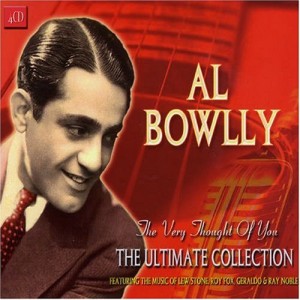Al Bowlly
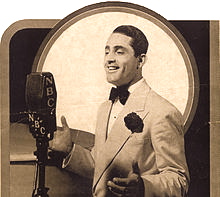
Al Bowlly sings “The Very Thought of You” (1934)
Al Bowlly sings “The Very Thought of You” (1934) [Full Resolution]. Jazz singer Al Bowlly sings his popular hit “The Very Thought of You” in the Pathe Studios, taken from Lew Stone’s famous ‘Monseigneur Band’. Bowlly was South African (although born in Mozambique) yet he became a great star in both the UK and America during the 1930’s. Al Bowlly enjoyed over 15 big hits from 1935 to 1941, acquiring a mass radio following of millions. Tragically he was killed in the Blitz, when his home in St. James was bombed in 1941. He was 43 years old. Check out Al Bowlly singing “Melancholy Baby.” http://www.youtube.com/watch?v=rRF5D6…
(7 January 1898 – 17 April 1941) was a Mozambican born South African singer, songwriter, composer and band leader, who became a popular jazz crooner during the British dance band era of the 1930’s and later worked in the United States. He recorded more than 1,000 records between 1927 and 1941. His most popular songs include “Midnight, the Stars and You,” “Goodnight, Sweetheart,” “The Very Thought of You“, “Guilty” and “Love Is the Sweetest Thing.”
Born in Lourenço Marques in the then-Portuguese colony of Mozambique, Bowlly gained his musical experience singing for a dance band led by Edgar Adeler on a tour of South Africa, Rhodesia, India and Indonesia during the mid-1920’s. He was then employed by Jimmy Liquime to perform in India, Calcutta,Singapore and the Raffles Hotel. In 1928, he arrived in the United Kingdom and briefly worked with Percival Mackey‘s band before being made redundant due to the 1930’s depression. In 1930, he was spotted and signed to accompany Roy Fox‘s and Ray Noble‘s orchestras that November. The signing with Noble led to a successful association between the two that resulted in more than 500 records being produced over a four-year period.
In 1933, Bowlly began to collaborate with Lew Stone and had further success producing some of the most popular jazz records of the 1930s. A year later, Bowlly travelled abroad to New York which resulted in further success, and an introduction into the American charts. During the mid-1930’s, Bowlly recorded “Blue Moon“, “Easy to Love“, “I’ve Got You Under My Skin” and “My Melancholy Baby” which were all sizable successes.
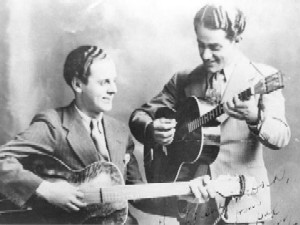 By 1938, Bowlly began to suffer problems with his throat and was forced to return to London. His absence from the United Kingdom had damaged his popularity with British audiences and he toured regional theatres and continued his recording career, performing with different orchestras in order to make a living. In 1940, he formed a double act with Jimmy Messene and took part in Radio Stars with Two Guitars, performing in theatres across London. His last recorded song was a duet with Messene of Irving Berlin‘s satirical song on Hitler, entitled “When That Man Is Dead and Gone”. It was his last venture before his death in an air raid in April 1941.
By 1938, Bowlly began to suffer problems with his throat and was forced to return to London. His absence from the United Kingdom had damaged his popularity with British audiences and he toured regional theatres and continued his recording career, performing with different orchestras in order to make a living. In 1940, he formed a double act with Jimmy Messene and took part in Radio Stars with Two Guitars, performing in theatres across London. His last recorded song was a duet with Messene of Irving Berlin‘s satirical song on Hitler, entitled “When That Man Is Dead and Gone”. It was his last venture before his death in an air raid in April 1941.
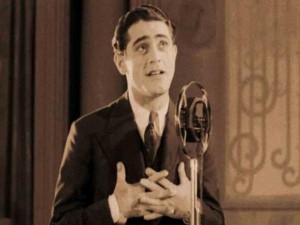 Biography – Early life and Career
Biography – Early life and Career
Bowlly was born in Lourenço Marques in the then Portuguese colony of Mozambique, to Greek and Lebanese parents who met en route to Australia and moved to South Africa. He was brought up in Johannesburg, South Africa. After a series of odd jobs across South Africa in his youth, namely as a barber and jockey, he gained his musical experience singing for a dance band led by Edgar Adeler on a tour of South Africa, Rhodesia, India and Indonesia during the mid-1920s. However, he fell out with Adeler, throwing a cushion at his head as he played piano on stage and was fired whilst the band was in Surabaya, Indonesia.
After a spell with a Filipino band in Surabaya he was then employed by Jimmy Liquime in India (Calcutta) and Singapore (Raffles Hotel). Bowlly had to work his passage back home, through busking. Just one year after his 1927 debut recording date in Berlin, where he recorded Irving Berlin‘s “Blue Skies” with Edgar Adeler, Bowlly arrived in London for the first time as part of Fred Elizalde‘s orchestra, though he nearly didn’t make it after foolishly frittering away the fare which was sent to him by Elizalde. That year, “If I Had You” became one of the first popular songs by an English jazz band to become well known in America as well, and Bowlly had gone out on his own by the beginning of the 1930s. First, however, the onset of the Great Depression in 1929 resulted in Bowlly being made redundant and returning to several months of busking to survive.
In the 1930’s, he signed two contracts—one in May 1931 with Roy Fox, singing in his live band for the Monseigneur Restaurant in London, the other a record contract with Ray Noble’s orchestra in November 1930.
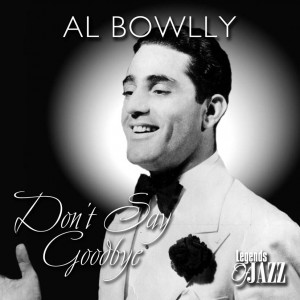 During the next four years, he recorded over 500 songs. By 1933 Lew Stone had ousted Fox as bandleader, and Bowlly was singing Stone’s arrangements with Stone’s band. After much radio exposure and a successful British tour with Stone, Bowlly was inundated with demands for personal appearances and gigs—including undertaking a subsequent solo British tour—but continued to make the bulk of his recordings with Noble. There was considerable competition between Noble and Stone for Bowlly’s time as, for much of the year, Bowlly would spend all day in the recording studio with Noble’s band, rehearsing and recording, only then to spend the evening playing live at the Monseigneur with Stone’s band. (Many of these Noble sides were issued in the United States by Victor, which meant that by the time Noble and Bowlly came to America, their reputation had preceded them.)
During the next four years, he recorded over 500 songs. By 1933 Lew Stone had ousted Fox as bandleader, and Bowlly was singing Stone’s arrangements with Stone’s band. After much radio exposure and a successful British tour with Stone, Bowlly was inundated with demands for personal appearances and gigs—including undertaking a subsequent solo British tour—but continued to make the bulk of his recordings with Noble. There was considerable competition between Noble and Stone for Bowlly’s time as, for much of the year, Bowlly would spend all day in the recording studio with Noble’s band, rehearsing and recording, only then to spend the evening playing live at the Monseigneur with Stone’s band. (Many of these Noble sides were issued in the United States by Victor, which meant that by the time Noble and Bowlly came to America, their reputation had preceded them.)
Move to the United States and return to Britain
A visit to New York City in 1934 with Noble resulted in more success, and their recordings first achieved popularity in the United States; he appeared at the head of an orchestra hand-picked for him and Noble by Glenn Miller (the band included Claude Thornhill, Charlie Spivak and Bud Freeman, among others).
During the mid-1930’s, such songs as “Blue Moon“, “Easy to Love,” “I’ve Got You Under My Skin” and “My Melancholy Baby” were sizable American successes—so much so that Bowlly gained his own radio series on NBC and traveled to Hollywood to co-star in 1936 with Bing Crosby, one of his biggest competitors, in The Big Broadcast.
He had appeared with his own band, the Radio City Rhythm Makers, but they had split by late 1937 when his vocal problems were traced to a wart in his throat, which briefly caused him to lose his voice. With him and Marjie separated and his band dissolved, that year he was once again down on his luck. He was forced to borrow money from friends for a trip to New York for the surgery of which he was so in need. In 1938, he finally returned to the United States to undergo successful major throat surgery for the removal of his vocal wart, but still had difficulties later in his career.
His absence from the United Kingdom when he moved to the States in 1934 damaged his popularity with British audiences. His career also began to suffer as a result of problems with his voice from around 1936, which affected the frequency of his recordings. He played a few small parts in films around this time, yet never professed to be an actor. The parts he did play were often cut, and scenes that were shown were brief. Noble was offered a role in Hollywood although the offer did not, unfortunately, include Bowlly, as a singer had already been instated. Consequently, Bowlly moved back to London with his wife Marjie in January 1937, but never really explained why he had returned, with contemporaries and fans being treated to a variety of stories ranging from the fact that he missed London to claims that he got mixed up with a gangster’s moll, so had been run out of America.
With his diminished success in Britain, he toured regional theatres and recorded as often as possible to make a living, moving from orchestra to orchestra, including those of Sydney Lipton, Geraldo and Ken Johnson. He underwent a revival from 1940, as part of a double act with Jimmy Messene (whose career had also suffered a recent downturn), with an act called Radio Stars with Two Guitars, performing on the London stage. It was his last venture before his death in April 1941. The partnership was an uneasy one, as Messene suffered from a serious drinking problem by this stage, and was known to turn up incapable on stage, or to not turn up at all, much to Bowlly’s consternation. His last recorded song, made two weeks before his death, was a duet with Messene of Irving Berlin‘s satirical song on Hitler, “When That Man is Dead and Gone.”
Personal Life and Death
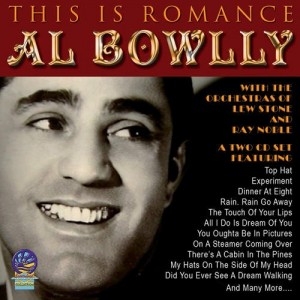 In December 1931, Bowlly married Constance Freda Roberts in St Martin’s District, London, but Bowlly discovered his new wife in bed with another man on their wedding night. The couple separated after a fortnight, and sought a rapid divorce. He remarried in December 1934, this time to Marjie Fairless, the marriage lasting until his death (Freda remarried in 1965, dying in Richmond-upon-Thames in 1967).
In December 1931, Bowlly married Constance Freda Roberts in St Martin’s District, London, but Bowlly discovered his new wife in bed with another man on their wedding night. The couple separated after a fortnight, and sought a rapid divorce. He remarried in December 1934, this time to Marjie Fairless, the marriage lasting until his death (Freda remarried in 1965, dying in Richmond-upon-Thames in 1967).
On 17 April 1941, Bowlly and Messene had just given a performance at the Rex Cinema in Oxford Street, High Wycombe, now demolished. Both were offered the opportunity of an overnight stay in the town, but Bowlly opted to take the last train home to his flat at 32 Duke Street, Duke’s Court, St James, London. His decision proved to be fatal, as he was killed by a Luftwaffe parachute mine that detonated outside his flat later that evening. His body appeared unmarked: although the massive explosion had not disfigured him, it had blown his bedroom door off its hinges and the impact against his head proved fatal. He was buried with other bombing victims in a mass grave at the Hanwell Cemetery (originally City of Westminster Cemetery), Uxbridge Road, Hanwell, London, where his name is given as Albert Alex Bowlly.
Legacy
Al Bowlly is invariably credited with inventing crooning, or “The Modern Singing Style,” releasing a book of the same name. Bowlly experimented with new methods of amplification, not least with his Melody Maker advert, showing him endorsing a portable vocal megaphone. With the advent of the microphone in 1931, Al adapted his singing style, moving away from the Jazz singing style of the 20’s, into the softer, more expressive crooning singing style used in popular music of the 1930’s and 1940’s. It was Bowlly’s technique, sincerity, diction and his personality that distinguish him from many other singers of the 1930’s era.
Al is also credited with being the first “pop star”. Prior to the advent of Bowlly, the bandleaders were the stars and the main attractions, with the records being sold as “Ray Noble and his orchestra (with vocal refrain),” a phenomenon that can be seen on 78’s of the period. Most singers were all but anonymous; however, Al’s popularity changed this, with him being the first singer to be given a solo spot on BBC radio due to popular demand, and records appearing featuring his own name. Bowlly’s personality, good looks, charisma, and above all his voice, earned him the nickname “The Big Swoon,” with Al finding himself being mobbed by female fans for autographs and photos after his performances.
As well as singing, Bowlly played both the guitar and the ukulele, with Joyce Stone, Lew Stone’s wife, saying: “You only had to play anything once to Al and he’d got it.” Bowlly remains one of the most highly regarded singers of his era because of his extraordinary range, his command of pitch and rhythm, and, above all, the sincerity with which he could deliver a lyric. Ray Noble is often quoted as saying that Al often stepped away from the microphone with tears in his eyes; “never mind him making you cry, he could make himself cry!”
A Blue Plaque has been approved by English Heritage and a suitable location is currently being finalised.


